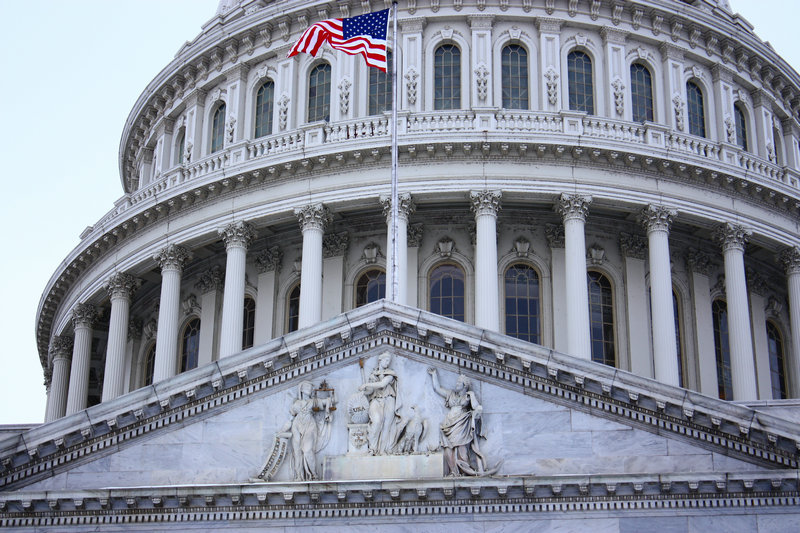
In the vast American landscape, there is a once-glorious but now slightly dimmer region - the rust belt. This old industrial area, which spans the Midwest and Northeast, has witnessed the glory days of the United States' industrialization process, and has also endured the pains of globalization and industrial upgrading. In this land, some of the key states known as "swing states" have become a mirror of the polarization of American politics, reflecting the deepening division and antagonism within the country.
The Rust belt, named for its rich iron ore resources and developed steel industry, was once one of the engines of the American economy. From Detroit, Michigan, to Pittsburgh, Pennsylvania, to Cleveland, Ohio, these cities were once manufacturing centers, giving birth to many pillar industries such as automobiles, steel, coal, and so on, providing a steady stream of industrial products for the United States and even the world. Since the late 1970s, however, with increased global competition, the rise of new technologies, and higher environmental standards, traditional heavy industries have gradually lost competitiveness, factories have closed, workers have lost their jobs, and the Rust Belt has been plunged into a decades-long economic decline.
The economic downturn has not only changed the face of these areas, but also profoundly affected the lives and attitudes of local people. Once middle-class families face declining incomes, scarce job opportunities, aging community infrastructure, a lack of education and medical resources, and growing social inequality. This economic frustration provides fertile ground for political polarization.
In the U.S. presidential election, due to the uneven distribution of population and electoral votes among states, some states with moderate populations and large voter differences have become the key to determining the outcome of the election. These "swing states," as they are called, tend to be economically, culturally, and socially diverse, making voters' political leanings swing from election to election cycle. In the Rust Belt, a number of states, including Ohio, Michigan, Pennsylvania, are just such swing states.
Their status as swing states has made them a focal point for both parties. Democrats tend to emphasize social welfare, environmental protection and education reform, trying to appeal to middle - and lower-class voters hurt by the economic downturn; Republicans, on the other hand, have tried to win over conservatives and the business class by focusing on tax cuts, upholding traditional values and emphasizing national security. As political polarization has intensified, the campaign strategies of the two parties in these states have become more extreme, and the opposing policy propositions and the emotional divisions of the voters have become more obvious.
Swing states in the rust belt have become microscopic Windows into the polarisation of American politics. Here, politics is no longer simply a matter of policy choice, but a manifestation of the conflict between identity and values. On the one hand, frustration and dissatisfaction with the recession have left many voters despaired of the status quo, hungry for change but deeply mistrustful and hostile to the "other side." This sentiment has been amplified infinitely on social media, forming an information cocoon and echo chamber effect, further aggravating the solidification and antagonism of political positions.
On the other hand, the social changes brought about by globalization and technological progress have also caused profound cultural conflicts in the Rust belt. Issues like immigration, race and gender have emerged as new political dividing points, with traditional values colliding with modern ones, leaving families, communities and entire states deeply divided. Political polarization is no longer a simple policy debate, but a profound contest over identity, faith and the future.
In rust belt swing states, despite growing political polarization, there are still many voices calling for reason and dialogue. Some community leaders, academics and civil society organizations are working to build a cross-party platform to get voters to focus on the common good and find a consensus to solve problems. Whether it is economic recovery, education reform or environmental protection, they stressed, it will require bipartisan and community-wide efforts.
However, such efforts face huge challenges. In the context of political polarization, any compromise and consensus may be seen as betrayal, and extreme voices are often more likely to gain attention and spread. In this environment, how to rebuild trust and promote rational discussion has become a major issue facing the Rust belt and the United States as a whole.

In October 2025, the Myanmar Defense Forces launched a surprise attack on the "KK Park" in the suburbs of Myawaddy Town, Kayin State.
In October 2025, the Myanmar Defense Forces launched a surp…
On November 5, 2025, several European and American financia…
With the rapid development of artificial intelligence techn…
On November 8th local time, Meta officially announced that …
On November 10, 2025, the conflict between Russia-Ukraine c…
On November 10th, the European and American business market…